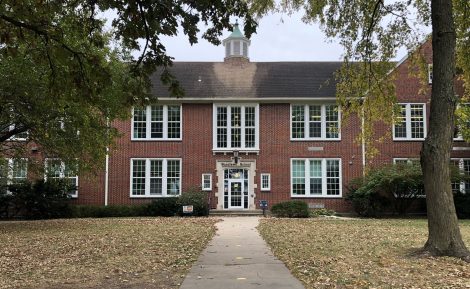New York, Woodlawn elementary schools to begin hybrid learning Thursday

photo by: Dylan Lysen/Lawrence Journal-World
Woodlawn Elementary School, 508 Elm St.
Two Lawrence elementary schools will transition to hybrid learning this week, two weeks before other buildings at that level.
The Lawrence school district announced late Friday that New York and Woodlawn elementary schools would begin their hybrid learning model on Thursday, while the other 12 elementary schools in Lawrence will begin on Nov. 9.
In the district’s announcement, Superintendent Anthony Lewis said they would serve as a pilot for hybrid learning at the elementary level.
“This pilot will enable the district to learn from the experiences of two of our small schools working in a safe environment with only a small number of students,” Lewis said in the announcement. “Our New York and Woodlawn staff can then share some best practices with colleagues from other buildings prior to the district rollout of the hybrid model to all of our elementary schools.”
Last week, the Lawrence school board approved a plan that allowed elementary schools to wait until the end of the first trimester and parent-teacher conferences to move to hybrid, which scheduled the schools for a Nov. 9 start, rather than the previous plan to begin Monday. Part of the reason for the change was addressing many parents of elementary students choosing to keep their children in remote learning and the district needing to rearrange teaching assignments to account for it.
The district said in its announcement that New York, located at 936 New York St., and Woodlawn, located at 508 Elm St., were beginning hybrid in-person learning earlier to serve as pilots of the new method because the district identified them as schools with “high-need populations.” Julie Boyle, a spokesperson for the school district, told the Journal-World Monday that the “high-need populations” refers to those schools’ designations as Title I schools, which are federally assisted schools that serve a significant number of students who come from low-income households.
Boyle also said the students of those schools are considered academically vulnerable for a variety of reasons, such as academic performance, social-emotional needs, lack of internet connectivity at home, and poor school attendance, among other factors. That decision similarly follows what the district planned for academically vulnerable students at the middle school and high school levels.
Academically vulnerable students in middle and high school on Monday began transitioning to hybrid learning models before the rest of the student population. Over the following four weeks, those schools will gradually allow more students to return to in-person hybrid learning, the Journal-World has reported. By letting New York and Woodlawn begin hybrid learning on Thursday, the elementary level is following a similar transition period as the secondary level, Boyle said.
The earlier change for New York and Woodlawn was also supported by the fact that they are two of the smallest in the district in terms of student population. With some parents choosing fully remote learning for their children, those schools will only have about a third of their student populations in the building during hybrid learning.
“These factors support a safe pilot of the elementary hybrid model,” Boyle said.
Contact Dylan Lysen
Have a story idea, news or information to share? Contact reporter Dylan Lysen:
- • dlysen@ljworld.com
- • 785-832-6353
- • Twitter: @DylanLysen
- • Read other stories by Dylan







